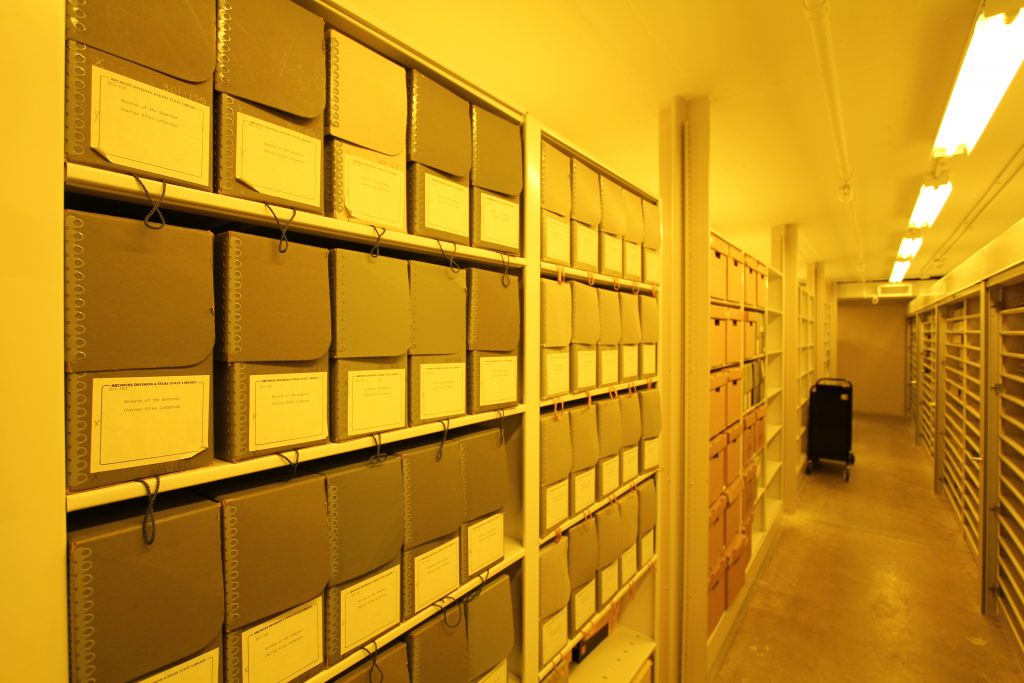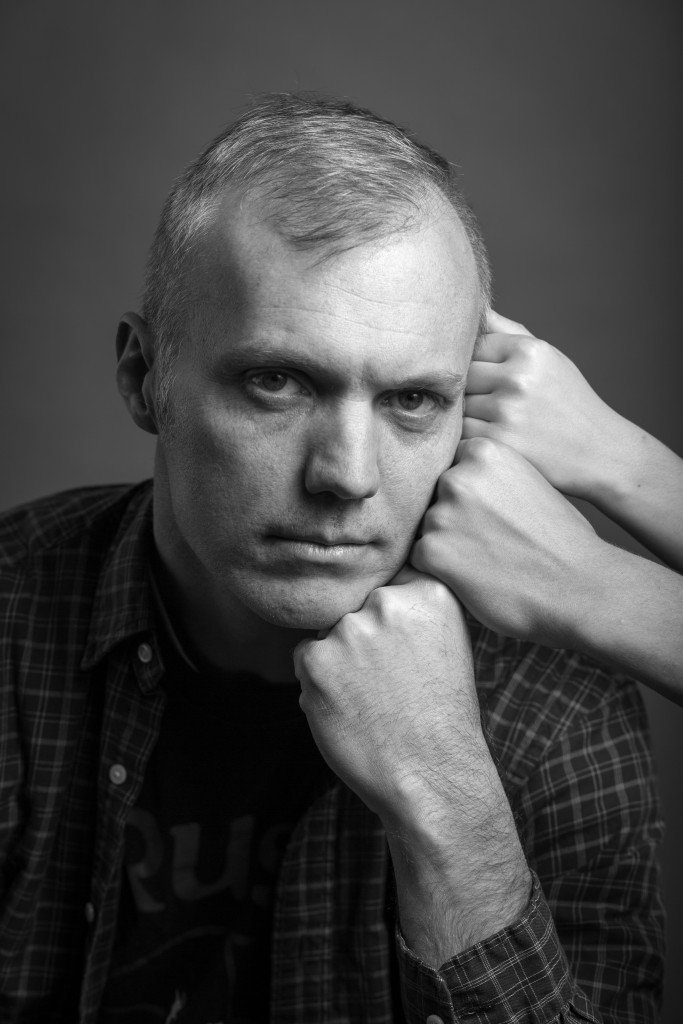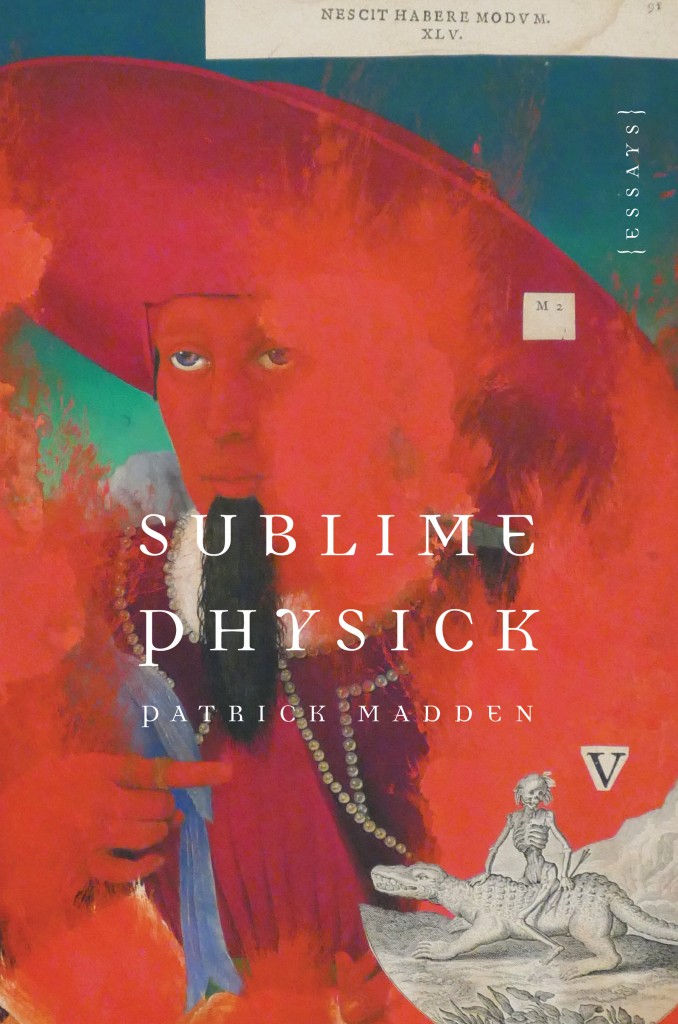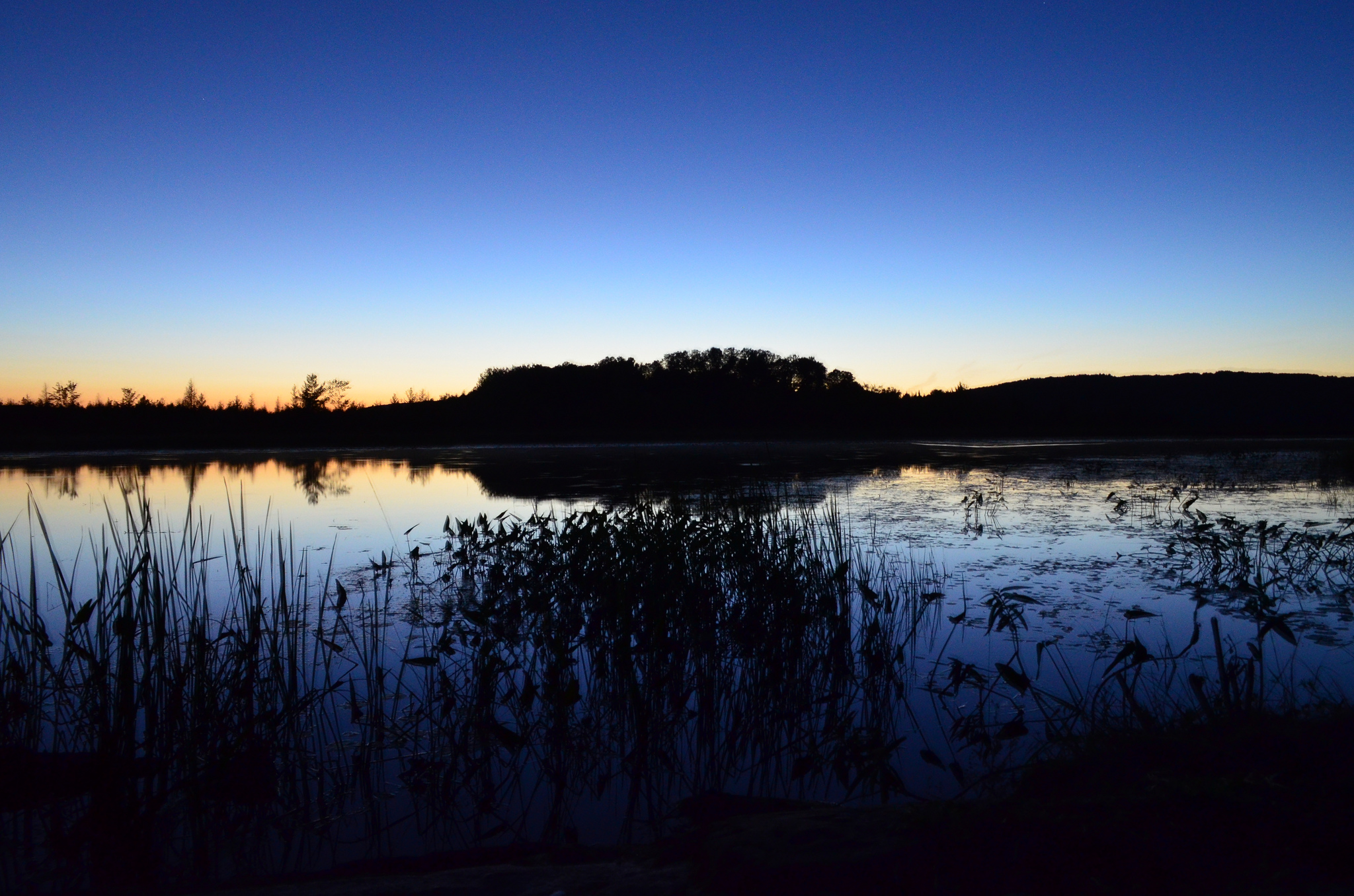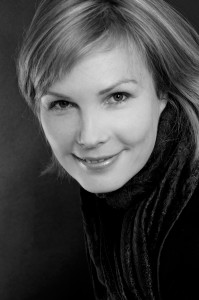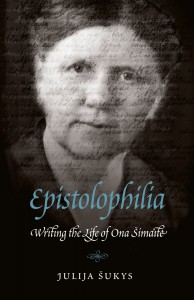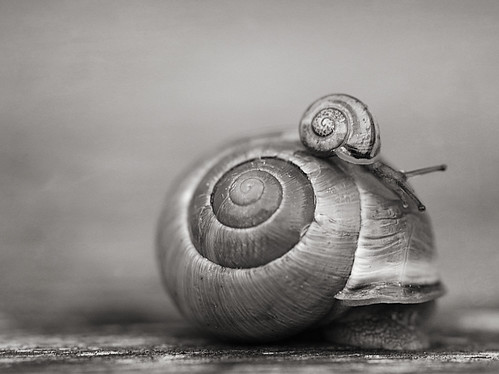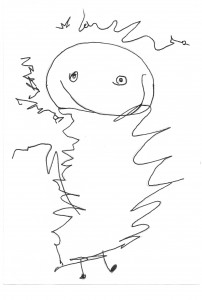Last summer, I spent a few weeks in the State Historical Society of Missouri developing an assignment for a new course called Women Writing Lives. I envisioned brining students into the archives and wanted them to get a sense of how enthralling archival work could be. It was more successful than I ever could have predicted, so I wrote a short piece about it for Assay: A Journal of Nonfiction Studies. Here it is.
CNF Conversations: An Interview with Patrick Madden
Patrick Madden, Sublime Physick. University of Nebraska Press, 2016.
Patrick Madden is the author of Sublime Physick (2016) and Quotidiana (2010), winner of Foreword Reviews and Independent Publisher book of the year awards, and finalist for the PEN Center USA Literary Award. His personal essays, nominated for four Pushcart Prizes and noted in the Best American Essays six times, have been published widely in such journals as Fourth Genre, Hotel Amerika, the Iowa Review, McSweeney’s, the Normal School, River Teeth, and Southwest Review, and have been anthologized in the Best Creative Nonfiction and the Best American Spiritual Writing. With David Lazar, he co-edited After Montaigne: Contemporary Essayists Cover the Essays and now co-edits the 21st Century Essays series at Ohio State University Press. A two-time Fulbright fellow to Uruguay, he teaches at Brigham Young University and Vermont College of Fine Arts, and he curates an online anthology and essay resource at www.quotidiana.org.
About Sublime Physick: A follow-up to Patrick Madden’s award-winning debut, this introspective and exuberant collection of essays is wide-ranging and wild, following bifurcating paths of thought to surprising connections. In Sublime Physick, Madden seeks what is common and ennobling among seemingly disparate, even divisive, subjects, ruminating on midlife, time, family, forgiveness, loss, originality, a Canadian rock band, and much more, discerning the ways in which the natural world (fisica) transcends and joins the realm of ideas (sublime) through the application of a meditative mind.
In twelve essays that straddle the classical and the contemporary, Madden transmutes the ruder world into a finer one, articulating with subtle humor and playfulness how science and experience abut and intersect with spirituality and everyday life.
Watch the book trailer for Sublime Physick here…in which Montaigne and Sebald get drunk together.
For teachers who’d like to adopt this book for their classes, Madden has provided a number of helpful teaching resources, including a 40-minute lecture on his writing process and writing prompts for each of the book’s essays. You can find those here.
Julija Šukys: First of all, Pat, thank you for this wonderful book. It’s a beautiful, melancholic text, penned, or at least published, at mid-life. We’re almost the same age, you and I, so I connected to the simultaneous gaze backward to childhood, forward to aging and death, and downward to the children at our feet. Tell me a bit about the organizing principle of this book. You write that the “essays all derive, in some way, from the physical world, and all reach, always insufficiently, toward the sublime.” Can you say a little bit more about this?
Patrick Madden: Thanks, Julija. I’m really glad you liked the book. I think that the middle of life (whether “midlife” or not) is a long period of relative stasis (I know I’m oversimplifying), so I hope that these essays can speak to lots of people, in the middle of life. As for the organizing principle of the book: I wanted to collect essays under a general characteristic that holds true not only for my own essays but for essays generally, and I discovered that phrase, sublime physick, while researching Amedeo Avogadro, the 19th-century Italian chemist who theorized that equal volumes of gas contained equal numbers of molecules, no matter the gases. We’ve since named Avogadro’s number (6.02 x 1023, the number of molecules in one mole) after him. Aaanyway, I learned that he held the chair of fisica sublime at the University of Turin. I thought it was a lovely oxymoronic term, because it suggests both the concrete and the abstract, the physical and the sublime. While I realize that this department was the equivalent of our modern-day “theoretical physics” (thinking about the science of the natural world), I played with all sorts of definitions and combinations that give insight into what essays tend to do. So this book collects many essays that have science themes and metaphors (I did my bachelor’s degree in physics), and they all make connections between the world of lived experiences (the concrete) and the world of ideas (the abstract), sometimes with a reach toward the spiritual (or sublime).
As you know, I had a group of students read your essay, “Spit,” and the endeavor was wildly successful – my students are still talking about you. In many ways, “Spit” is a classic essay: it combines scene, research and reflection flawlessly. It’s conversational and intimate yet deeply, deeply intellectual, and it vacillates in the most surprising ways between the big and the small. It appears to be about one thing (saliva!) and turns out to be about something else entirely (redemption, forgiveness, self-forgiveness). Tell me about the writing process of this essay.
I am smiling. They were a great bunch to talk with, and I’m glad the essay had a good effect on them. I hope one thing they can take from that essay is that they can write about anything, even frivolous or unappealing things, and they can write without knowing from the start where they’re going or what it all means. One night as I was putting my daughters to bed. I realized that one of them was learning to whistle, another was learning to snap her fingers, and the third was learning to ride a bike, and I had a flash of memory to when I learned how to spit. I thought this was an odd thing to remember, especially because I don’t usually have a good memory. So I began to write an essay about spit. It was all very superficial at first: I gathered all the memories and associations I could make with the literal act of expectorating. Of course, I knew that this would never work as an essay. I needed something significant, an idea to explore. I soon remembered what is probably the essay’s climactic moment, when I returned home for a weekend during my freshman year of college and I discovered that one of my friends was now hanging out with a different crowd, doing as they did. I got upset, we argued, and in the escalation of emotions, I spat at him. Because my friend had since died, very young, I began thinking about forgiveness. Beyond that, as I was trying to get some DNA research done on my ancestry (by sending a cheek swab for analysis), I met, through email and phone, a distant relative who’d never known anybody he was genetically related to. Even though our common ancestor lived centuries ago, he was pleased to get to know me. As we shared our experiences, I learned that he’d recently gotten into some legal trouble, so that the life he’d worked so hard to build was falling apart. I began to see him as a tragic hero, undone by his fatal flaw and events beyond his control. This was a challenge to the dear notion that people can repent and change. So I wrote toward this uncomfortable question: What is repentance? How can we forgive? And so forth. I felt that this was a substantial idea at the end of an initially inane essay.
Some time ago, I was introduced at a reading as “an essayist,” and immediately felt a sort of revolt inside me that said “No! I’m not an essayist…” A few seconds later, I reversed this and thought, “Hang on, maybe I am an essayist…” It’s been a long road, but for what it’s worth, I increasingly define myself as such. By contrast, you seem to have understood early on exactly what kind of writer you were. In “On Being Recognized,” you quote Arthur Christopher Benson: “The point of the essay is not the subject, for any subject will suffice, but the charm of personality” (117). What is the point of the essay for you, Pat? Can you talk a little about your journey to the essay? Did you flirt with other genres before you settled on this one? Do you ever (as I did recently) get accused of fetishizing the essay?
“Fetishizing the essay”! I like that phrase. I’ve never been accused of that, but only (I suppose) because it’s so obvious that I do it. People feel it’s unnecessary to even make the statement about me. Of course, I deny the premise, as “fetishizing” assumes that the obsession is “excessive or irrational,” and this is obviously false. In any case, I never really had any other literary goals, and though I like reading other genres, I’ve never seriously tried writing in them. Joseph Epstein says that essayists are all failed at other literary and artistic pursuits (e.g., Lamb the failed playwright and poet; Hazlitt the failed painter), but this is not the case for me. Unless I’m a failed physicist, I guess. Yes, maybe that’s it. I came to the essay because it promised a great freedom. I had a physics degree, but already before I had graduated I felt the narrowing constraints of lifelong expertise in a very small subject area. In physics, this smallness is doubly true: each physicist’s field is metaphorically small, but also a cutting-edge physicist will probably be working with subatomic particles, invisible even to microscopes, and the work tends to involve colliding accelerated particles then sifting through the computer data for years in order to get a read on what flashed into and out of existence during a nanosecond of interesting results. Aaanyway, I felt claustrophobic at the prospect of dedicating my life to this. Meanwhile, in the two years after graduation, I served a Mormon mission to Uruguay, which gave me a lot of time to think about my future. Gradually I realized that I loved to think wildly, without restraint, flitting from one subject of interest to the next as the spirit moved me. And eventually I discovered or decided that writing essays could be a way to keep my life open and free, to study what subjects inspired me for as long as they inspired me, and then move on. So I came to the essay knowingly, intentionally, and with great hopes. I think now that I was naïve, but also very lucky, so that my life has worked out to be what I had hoped for.
By the way, I don’t know who introduced you as an essayist, but I feel that the title is a great compliment. Most people who would use it to describe you would do so knowingly, meaning that you’re an experimenter and explorer. Continue reading “CNF Conversations: An Interview with Patrick Madden”
Unplugging
So, I’m about to start a major rewrite of my new book (again). I keep reminding myself that no one said this was supposed to be easy and that wanting a manuscript to be ready, no matter how hard you do so, doesn’t make it so.
But conditions for the start of the rewrite are in place: in two days, my husband, dog, son and I head north to an internet-free lake in Ontario. After a few days of visits with friends and family, my husband and I will be left alone on the lake with our work and few distractions. A sort of DIY writers’ retreat.
A couple months ago, I heard Michael Harris in discussion about his book, The End of Absence. It’s about technology and about how we are constantly “connected.” Never alone, never quiet. Anyone who knows me will confirm that I don’t carry a smartphone (we gave ours up as a family two years ago, mostly for economic reasons), so in this sense I’m far less connected than most. I thought it was funny to hear how Harris engineered an experiment in unconnectedness by duct-taping his smartphone to the kitchen counter. We still, quaintly, use a landline and our phone still sits on the kitchen counter, attached to the wall behind it. Though we have a cell phone, we rarely know where it is or if it’s charged.
All that said, I am very attached to my laptop, to email and to quick Internet searches. Possibly too attached. The laptop will come to the lake (along with the book drafts on it) but the internet connection will be left behind.
It’s not a stunt, this unplugging of ours. It just happens that the cottage we chose, perfect in every other way, is unconnected. Perhaps that too, in the end will turn out to be a perfect attribute. And though I’m not heading up to the lake to create the conditions for an essay about the internet-free life, I suspect I may have some thoughts about it when I return.
I’ll let you know what I come up with.
[Photo: AKATDOG]
How Much Self-Promotion Is Too Much?
OK, so as authors we are told constantly that we have to market our own books. The publishing industry, for better or worse, has largely washed its hands of promotion, except for the lucky and most commercial few. The rest of us are largely on our own.
Authors must have a website (check), keep a blog (check), have a Twitter account (yup), and a Facebook page (uh-huh), and use them regularly. Some writers have mailing lists, guest blog, write op eds and so on, all in service of selling more copies. It’s a big job and very time-consuming. If done well, it’s breathtaking to watch. If done clumsily, the result is painful to behold.
Promoting a finished book can take over your life to such an extent that there’s little room left to dream up, research, or write a new one. This seems problematic to me. After all, if we’re not writing, then what’s the point?
So, I’ve been wondering: how much flogging is too much?
It’s a question I’ve been thinking about increasingly as my inbox is clogged again and again by the newsletter (one I never subscribed to) of an author who has made it his full-time job to promote a newish book (actually, it’s over a year old). And each time the newsletter arrives, announcing a new lecture, reading, or reminding me what a good gift the book would make for whatever occasion, I find myself a little more irritated than the last. Annoying readers can’t be a good marketing strategy. The fact is, I own the book and I’ve read it, so why am I being bombarded with pitch after pitch? When is enough enough? And how can an author avoid going over the same old territory again and again?
As part of Canada Reads, Coach House Books posted what I think is good advice on how authors can use social media more effectively than the above-mentioned author has:
Also important to remember: not only are you a human being, but so are your readers. Many of those readers are fellow authors, artists, and all-round smart people. They are not just buyers or cash cows or vehicles for gushing blurbs that pop up on Amazon. They are the reason you rewrite a sentence 12 times and the community for whom you stay in the library until closing. Talk to them. Listen to them. Don’t just bombard them with junk mail.
Now, off to work.
[Photo: lonely radio]
CNF Conversations: An Interview with Essayist Chris Arthur, Part II
Chris Arthur, On the Shoreline of Knowledge: Irish Wanderings. Iowa City: Shoreline Books, 2012.
This is Part II of a two-part interview with Chris Arthur. Click here to access Part I.
Julija Šukys: Like you, I’m obsessed with the writing of ordinary lives. The following passage is marked in pencil and with exclamation marks in my now dog-eared copy of your book: “History is determined by the inky regimen of print. But ordinary lives happen more in the key set by a pencil: fainter, less permanent, more tentative, easily erased. [. . .] I prefer to take the back routes, to look at littler events, the stories of the day to day, of families and their places. These, more than any headline, are what make us who we are.” I write ordinary lives in order to create a trace for those I fear will (unjustly) be forgotten. By contrast, though, I get the sense from your work, and the ways in which you reach so far back (to Neanderthal mourning rituals, for example) that you write with the consciousness that this too, this trace of yours, will fade. Am I right about this?
Chris Arthur: Yes! I think all the traces we leave, all the traces we write, will vanish. According to Buddhist teaching, by which I’ve been more than a little influenced, one of the three marks of existence – that is, one of the three absolutely fundamental features of our world – is what’s termed “anicca,” or impermanence. That strikes me as highly plausible. I think everything passes. Nothing humans do – still less who they are – is permanent, however much we may rail against this unpalatable fact. When I read your question I was reminded of an early essay I wrote entitled “Ne Obliviscaris” (= “lest we forget”). It emphasizes, more explicitly than the other essays do, the way in which anicca claims us all:
If the mind cannot immediately encompass the idea of its own complete annihilation, the fact that soon there will be no one who remembers us, ask what remains – beyond the dumb inheritance of flesh – of the people who were our great-great-grandparents. Or, if that is still too close, ask what now remains upon the shifting network of human memory of the ten-year-old Iron Age girl drowned as she helped her mother collect mussels from along some windswept northern shore. Let her act as symbol for the millions of strangers unknown to us, unremembered by anyone, who have vanished without trace in history’s wake and are recoverable only through the imagination.
Loss and transience are, I think, important motifs that recur throughout my five essay collections. This may make them sound rather sombre, if not grim – but I don’t think they are; I hope they’re not. It’s transience, after all, that underscores a lot of life’s beauty, what helps to make it beautiful.
In “Kyklos” you write about the way your essay has “spiralled away, evolved and developed, meandered unpredictably from its initial point of origin.” A great topic for discussion over the course of my fall workshop has been precisely this aspect of essay writing: the fact that you may not (almost certainly don’t) know where you’re going. Essays wander. They are experiments. They take us off into unexpected territory. And this frustrates beginning writers, because it feels difficult and therefore they begin to believe they’re doing something wrong. I wonder if you could talk about how you write essays. Do they come quickly? Are they hard-fought? Do they come slowly over years? What is the role of rewriting in your work? Do you have faithful friends or editors whom you trust with drafts? Do you have any words of wisdom for those of us stuck inside an unfinished and uncooperative essay (as I am now)?
This reminds me of a piece of wisdom about essays from one of my mentors in the genre, Lydia Fakundiny. She says that if at some point in its composition an essay doesn’t surprise the writer, it probably isn’t worth writing. I agree with that. Of course when I start to write a piece I have some idea of where it’s headed – but not much. The discovery is in the writing and the pieces that have pleased me most are those where surprise is a key element, where insights and connections happen that I couldn’t have predicted when I set out. Yes, absolutely, essays are experiments – I sometimes refer to them as wonderings and wanderings in prose. If they don’t take us into unexpected territory they quickly become tedious. This means there’s a strong element of unpredictability about them, which can be frustrating – because sometimes they don’t work, and because they’re resistant to planning. I think beginning writers are sometimes approaching essays with a one-size-fits-all blueprint in mind for how to structure them. That strikes me as desperately wrong-headed. A useful initial exercise for anyone starting out is to read the Best American Essays series and get a sense of just how varied essays can be.
I wouldn’t like to give the impression, though, from this emphasis I’ve put on unpredictability, surprise and not knowing where a piece is going, that there’s any lack of care or precision in an essay’s composition. Good essays are carefully crafted (and again a reading of Best American Essays soon makes this very apparent).
It takes me weeks to complete an essay and almost every one goes through numerous rewrites as I hone it and fine tune it and try to get it into the shape I want. Very occasionally, a piece will emerge quickly. It seems to fall on the page pretty much in its final form. But that’s rare. Mostly my initial scribbles are crude, tentative, unfinished and miles away from the final version. It takes me a long while to get from inception to completion – and it can be struggle. Readers are oblivious, of course, to the huge amount of work involved in moving from first draft to final finished form – in this as in other genres. That’s the part of writing that’s only visible to the author – and rightly so, I think. I mean, no one wants to look at the rubble of unrefined material and what’s been discarded. Readers want to taste the finished dish, not your raw ingredients. But it can be highly problematic if beginning writers aren’t aware of this dimension and imagine that composition happens in one unrevised burst that’s perfect at the outset. I don’t know anyone who writes like that. Wasn’t it E.B. White who said “The best writing is rewriting”?
I don’t share work in draft form with anyone, but I’m more than willing to listen to suggestions from a handful of journal editors whose judgment I’ve learned to trust. When they suggest changes to what I’ve presented to them as an essay’s final form I’ll often make the recommended change – or, prompted by it, come up with some revision of my own. Once an essay has been published, though, I tend to rule a line under it and not look at it again – otherwise I might want to make yet more changes. Paul Valéry’s famous observation that “a poem is never finished, only abandoned” applies to essays too, I think. It’s interesting that Patrick Madden, an essayist whose work I admire, says quite explicitly in one of the essays in his book Quotidiana (2010), “The danger of writing an essay like this: there is nowhere to end.” But for practical purposes you need to draw the line and end things, or abandon things, somewhere – otherwise what you’re working on will eventually start to get in the way of new ideas, new pieces.
You ask about words of wisdom for those stuck inside an unfinished and uncooperative essay. Well, the first thing I’d say is I’m glad I’m not there! Because I have been there frequently and I know how frustrating it can be. When I get into this situation with a piece of work I’ll sometimes give up and trash it – and it’s better to do that before you expend massive amounts of time and energy trying to fix the unfixable. But of course I’m reluctant to abandon something once I’ve started to write it, and it can be well-nigh impossible at some stages to tell if something just needs more revision and refinement or if it’s something that’s terminally flawed. One thing that’s worth considering is whether the recalcitrant piece is two (or three) essays rather than the single one you think you’re operating with. I know I’ve escaped from several tangles by realizing that I was trying to write two essays simultaneously. Separating them and working on them separately solved the problem. It’s also sometimes worth bringing some radical editing to bear. Trying to begin three paragraphs (or pages) in and ditching what goes before that can help to get things moving, or reorganizing the order of the sections. Writing a piece to a strict word limit that’s lower than what you normally work with can occasionally be effective. Sometimes it helps – if there isn’t a deadline looming – to put the piece aside for a few weeks or months and look at it again after a break. I also like to have several pieces of work on the go at the same time, at different stages of completion, so as I can switch mental gears between the different demands of initial sketch, rough draft, first draft and final draft (and all the rewritings and revisions in between). So, if I’m stuck with one piece at one phase of its writing, shifting to another piece at another phase can help. It can also be helpful to move between working on single pieces and a collection. Sometimes when things don’t work it’s just a case of being stale and needing to go out for a walk or a swim or a cycle – a change of scene, getting away from the screen or the page. And of course writers, given what they do, sometimes spend too much time in their own company. Sometimes all an essay that isn’t working needs is some good company and conversation, rather than any kind of further emphasis on the solitary business of trying to get sentences to behave the way you want them to. But sometimes none of these strategies work. I don’t mean to be pessimistic in saying that, I think it’s just being realistic. I’ve certainly experienced the wretched business of a piece of writing that promises to be good, claims lots of time, is something that keeps drawing me back, but in the end I just can’t figure out how to get it into a form I’m happy with. Maybe in order to have success with writing you need to experience a few failures along the way. But here’s hoping your unfinished/uncooperative essay is one that responds to treatment and ends up being something you’re pleased with.
Finally, if an essay looks at a question or a thing or a memory from all angles, then perhaps an essay collection can be said to do the same, but on a bigger scale. Having never written a collection myself, I’m intrigued to hear about the process of putting together such a book. What comes first – the essays or the themes? Do you bring together pieces that seem to interconnect or do you set out to write complementary essays? Or a combination of the two?
The essays come first. Then, as I start to think of them together, themes emerge that make it clear which ones work together. At that point it’s easy enough to decide what to include in a collection and what doesn’t belong there. Likewise the running order of the selected pieces, though it may initially seem hard to call, becomes obvious as I work on the essays together and think of them as a collection, not just as individual pieces. I never set out to write complementary essays. The books evolve out of the essays I write, but I don’t write them with a view to writing a book. When I’m writing an essay, it’s just that particular essay that I’m thinking about.
Richard Chadbourne says something interesting about essays considered singly and put together as a collection. His comment is included in the course of what I think is a good characterization of the genre as a whole:
The essay is a brief, highly polished piece of prose that is often poetic, often marked by an artful disorder in its composition, and that is both fragmentary and complete in itself, capable both of standing on its own and of forming a kind of ‘higher organism’ when assembled with other essays by its author.
I’d like to think that my essays are capable of standing on their own – but that the collections work as “higher organisms” so that reading them together in a book sees them acting in the kind of mutually enriching/reinforcing way that Chabdourne has in mind. Incidentally, he goes on to say of the essay that:
Like most poems or short stories it should be readable at a single sitting; readable but not entirely understandable the first or even second time, and re-readable more or less forever.
And he concludes: “the essay, in other words, belongs to imaginative literature.” I’d agree wholeheartedly with that. (His comments are made in an excellent article, “A Puzzling Literary Genre; Comparative Views of the Essay,” in Comparative Literature Studies, Vol. 20 no. 1 (1983), p.149-50.)
A parallel to thinking about making collections of essays is thinking about the different ways in which a selection of those already published in book form might be arranged. I did this with Words of the Grey Wind, of course, but it’s something I’d like to do again. For instance, I’ve several times thought of putting a book together that draws the various “bird essays” I’ve written – “Kingfishers” and the “Last Corncrake” from Irish Nocturnes, “Swan Song” and “Beginning by Blackbird” from Irish Haiku, “Waxwings” from Words of the Grey Wind and three that are in the collection I’m just completing now. That’s the kind of thing that might tempt me to try to write “complementary essays.” Of course the birds themselves are not the main subject. It’s more that they offer a way into what I want to write about. I’d also like to explore arranging essays around the theme of different varieties of looking, grouping them according to whether they look at natural objects, manufactured things, paintings, books, photographs, sayings, or memory. I even have a tentative title and subtitle for such a volume: How to See a Horse and Other Lessons for the (Mind’s) Eye. But I think it’s highly unlikely that any publisher would want to take on something like this, so I suspect these imagined rationales for selection.
Author Interview in Foreword Reviews this Week
Here’s an interview I did with ForeWord Reviews, a great publication that focuses on books published by independent presses. You can access the original here (scroll down to the bottom of the page):
Conversational interviews with great writers who have earned a review in ForeWord Reviews. Our editorial mission is to continuously increase attention to the versatile achievements of independent publishers and their authors for our readership.
Julija Šukys
Photo by Genevieve Goyette
This week we feature Julija Šukys, author of Epistolophilia.
978-0-8032-3632-5 / University of Nebraska Press / Biography / Softcover / $24.95 / 240pp
When did you start reading as a child?
I learned to read in Lithuanian Saturday school (Lithuanian was the language my family spoke at home). I must have been around five when, during a long car trip from Toronto to Ottawa to visit my maternal grandparents, I started deciphering billboards. By the time we’d arrived in Ottawa, I’d figured out how to transfer the skills I’d learned in one language to another, and could read my brother’s English-language books.
What were your favorite books when you were a child?
E. B. White’s Charlotte’s Web and Roald Dahl’s Charlie and the Chocolate Factory come immediately to mind. These are books that I read and reread.
What have you been reading, and what are you reading now?
I recently finished Mira Bartok’s memoir The Memory Palace, which I found really extraordinary. I’m now reading Nicholas Rinaldi’s novel The Jukebox Queen of Malta, which was recommended by the writer Louise DeSalvo. My husband, son, and I are nearing the end of an eight-month sabbatical on the island of Gozo, Malta’s sister island, so I’m trying to learn more about this weird and wonderful place before we head home to Montreal.
Who are your top five authors?
WG Sebald: To me, his books are a model of the possibilities of nonfiction. They’re smart, poetic, restrained, and melancholy.
Virginia Woolf: I (re)discovered her late in life, soon after the birth of my son, when I was really struggling to find a way back to my writing. She spoke to me in ways I hadn’t anticipated.
Marcel Proust: I read In Search of Lost Time as a graduate student, and the experience marked me profoundly. This is a book that doesn’t simply examine memory, but enacts and leads its reader through a process of forgetting and remembering.
Assia Djebar: I wrote my doctoral dissertation, in part, on Assia Djebar, an Algerian author who writes in French. Her writing about women warriors, invisible women, and the internal lives of women has strongly influenced me. Djebar, in a sense, gave me permission to do the kind of work I do now, writing unknown female life stories.
Louise DeSalvo: I discovered De Salvo’s work after the birth of my son when I was looking for models of women who were both mothers and writers. DeSalvo is a memoirist who mines her life relentlessly and seemingly fearlessly. She’s a model not only in her writing, but in the way she mentors and engages with other writers.
What book changed your life?
There are two. Virginia Woolf’s A Room of One’s Own and her collection Women and Writing, especially the essay “Professions for Women.” I read these at the age of thirty-six when my son was approaching his second birthday. My work on Epistolophilia had stalled, and I was exhausted. I was trying to create conditions that would make writing possible again, but I was struggling with some of the messages the outside world was sending me (that, for example, it was selfish of me to put my son in daycare so that I could write; or now that I’d had a baby, my life as a woman had finally begun, and I could stop pretending to be a writer).
I remember feeling stunned by how relevant Woolf’s words remained more than eighty years after she’d written them. What changed my life was her prescription (in “Professions for Women”) to kill the Angel in the House. Before reading this, I’d already begun the process of killing my own Angel, but Woolf solidified my resolve. There’s no doubt that she is in part responsible for the fact that I finished Epistolophilia and that I continue to write.
Continue reading “Author Interview in Foreword Reviews this Week”
Post-Publication Projects: On Returning to Small Forms
I’m leading a writer’s workshop on the personal essay in the fall. I’m happy about it, because the essay is a form I love.
I tend to write essays at the beginning of a bigger project, and use them as a way to test out ideas and to work through central questions of longer projects. But since I’ve been, on the one hand, shepherding out my new book, and on the other, slogging through the final third of a new book manuscript, I haven’t actually written an essay for a while. Bigness has consumed my writing life. Yet, seeing as I’m going to be trying to offer some insights into the form, I decided it was time I sat down to another one.
When we first arrived in Gozo (Malta’s sister island), where my husband, son, and I are spending an 8-month sabbatical (only 7 weeks until we head home), I had all kinds of ideas for a book I would write about this place. “Botany!” I thought, “There’s got to be a story in all this plant life and especially that weirdly named Fungus Rock.” Then, later, “Saints and healers!” Then,” Knights of Malta!” And finally, “A travel memoir about our time here…” None of these books have come to fruition.
Instead, as is my habit, I’m starting with an essay. Perhaps a book will follow.
For a couple of weeks now I’ve been corresponding with an editor at a reasonably mainstream magazine. I originally sent a pitch for a long piece — 5,000 words — about Gozo, the naming of places, and the idea of home. It’s a length I like because you can say a lot in 5,000 words, but it’s still short enough to be read in one sitting. The editor came back to me with good news. She liked the idea, but asked that I revise the pitch and shrink the envisioned essay down to no more than 1,000 words.
Now, for someone who’s been writing books, 1,000 words is very short indeed. (Just to give an idea: this blog post is over 700 words long!)
No problem, I said. I’m up for the challenge.
This is where the process got complicated (that is to say, I learned something about myself).
For 5,000 words, I can lay out a structure and map out ideas in advance. I have enough room to look ahead and plot which move will come after which. Not so for 1,000 words. Perhaps it’s a personal failing, but I feel like the only way for me to plan out an essay that short is not to. I have to feel my way through while writing a first draft, then cut, cut, cut, until I’ve smoothed the text down to its kernel.
Unsurprisingly, my reworked pitch didn’t impress the magazine editor. It was too vague and too general. I’m sure others know how to pitch a mere 1,000 words, but I, big-heavy-text-writer that I am, evidently failed miserably. Like a large-animal vet trying to write a care manual for rabbits and gerbils.
But to her credit, the editor hasn’t given up on me. She still likes the original concept, is willing to see how I can make it work as a tiny text, and is waiting for a draft.
Tiny-essay writing is a process that is so different from book writing. With the latter, there’s breathing room. You can use your whole self, your whole past, and explore connections big and small. You can make mistakes and edit them out without throwing the whole thing off. But in a tiny essay, you have to choose your moves carefully. Any misstep, and it’s over.
The Rumpus‘s fantastic advice columnist Sugar recently came out. That is, she revealed her true identity — that of a writer named Cheryl Strayed. Strayed will soon release a collection of her Dear Sugar columns as a book called Tiny Beautiful Things. It’s a formulation I love.
That’s what I think 1,000-word essay has to strive to be: a tiny beautiful thing. Tight, strong, economic, and without a word out of place.
A bit like the island of Gozo itself.
So here’s to moving back from the big to the small.
Wish me luck.
This post is part of a weekly series called “Countdown to Publication” on SheWrites.com, the premier social network for women writers.
[Photo: Funchye]
This is Who-Man: On Writing, Play, and Fun
This is Who-Man. My son and I invented him over breakfast this morning.
Who-Man is a superhero whose arch-enemy is a many-eyed monster called “Crime.” Who-Man wears a bumpy suit (as you can see in Sebastian’s rendition of him above). The suit can shoot fire, but our hero rarely has to use this weapon. He has other ways of defeating his enemies: confusion.
Here’s an example of one of his crime-fighting encounters:
Who-Man hears a bank’s silent alarm and rushes to the scene of the crime. He succeeds in intercepting the robbers just as they are about to jump into their getaway car.
Who-Man: Stop! In the name of Justice and Who-Man!
Robbers: In the name of who?
Who-Man: Who-Man!
Robbers: What?
Who-Man: No, Who!
Robbers: Who?
Who-Man: Yes, that’s me! Who-Man!
Robbers: Oh man, what?
And so on until they’ve wasted so much time that the police arrive and arrest the bad guys.
Sebastian was laughing so hard when we acted this scene out that he could barely talk (he’s definitely ready for “Who’s on First”). Then he said “Let’s write a a book about Who-Man! We can make the first page right now!”
As we giggled and added detail upon detail to our story, I had a feeling in my chest that I recognized. It was the elation of creativity and play. It’s the way I feel when my writing is working.
When I started writing my first book, I spent months reading and researching and sitting on my hands, trying to resist the scholarly impulses that graduate school had hammered into me. I had just completed my PhD, and won a coveted postdoctoral fellowship. I should have written a dry literary study, gotten myself a tenure-track job, and settled into a life of literary analysis. But no.
Instead, I wanted to write something that could never be mistaken for an academic book. I decided not to give in to my training (better to write nothing than to write stuff that made me unhappy, I reasoned), not shush my creative impulses, and allowed myself to do some preposterous things. Some of the more insane ideas got cut during the editing process, but others were just crazy enough to work.
Fun and play are not concepts that would naturally be associated with the kinds of books that I write, because so far, I’ve only written about tragedies and atrocities. (Though Who-Man may change all that!)
For example: my first book (Silence is Death) is about an Algerian author who was gunned down outside his home at the age of 37 in a growing wave of violence against artists in intellectuals during the 1990s. My second (Epistolophilia) is about the Holocaust in Lithuania, and my third (working title: Siberian Time) will be about about Stalinist repression.
Nonetheless (and at the risk of sounding psychologically unbalanced), one of the ways I know I’m on to something good is that I start having fun.
In Silence is Death, I wrote a posthumous interview with Tahar Djaout, the subject of my book. A chapter of almost pure invention (though I still had to do a lot of research), it was great fun to write. I visited then wrote about shrines full of saints’ bones, interviewed nuns about the meaning of relics, and dragged my husband on a weekend trip to a funny little Iowa town called Elkader that was named for the Algerian national hero, Emir Abdelkader. All of this made its way into that first book, which turned out to be my first big step into creative nonfiction.
For Epistolophilia, I recorded the trips I made with my infant son to find my heroine’s various homes, including a French nursing home where Ona Šimaitė (the subject of the book) lived out her final years. I wrote about my pregnancy, compared the pronunciation of my heroine’s name to a Leonard Cohen song, and immersed myself in a friendship that only existed in my head. I circumnavigated the globe, collecting archival documents along the way.
That too was fun.
In the Guardian’s famous “Ten Rules for Writing Fiction,” (or nonfiction, for that matter) Margaret Atwood says, “Nobody is making you do this: you chose it, so don’t whine.”
I would add: enjoy it. Living a life of writing is a great privilege. Whatever way you manage to do it, remember to have fun (in the name of Who-Man!) and to play once in a while.
Your writing will be better for it.
[Image: Who-Man, by Sebastian Gurd. January 19, 2012]
This post is part of a weekly series called “Countdown to Publication” on SheWrites.com, the premier social network for women writers.
In Praise of University Presses: How They Work, What They Publish, and Why You Might Consider Them
For almost ten years now, there’s been growing anxiety in the writing community about the “publishing crunch.” Essentially, what’s happened is this: publishers find themselves in increasing financial peril; they need to make money, so they try to make safe bets.
The result for readers is a “narrowing of the breadth and depth and diversity of our culture: the quieting of all but the blandest voices, the elimination of all but the safest choices.” The result for writers is that every year it gets harder to publish. Bestsellers reign supreme, and midlist (or mid-career) authors have been shunted down the pecking order, taking the place that beginning writers used to occupy. As small presses (the home of many first-time authors) die in huge numbers, first-time authors may find themselves out in the cold.
It’s a kind of death of the middle class, but within the microcosm of our industry.
There are many reasons for the crunch: the publishing industry’s antiquated returns systems, the growth of the big-box store and mega-distributor, the rise of e-books and internet retailers, and the influence of ever-larger publishing giants.
A writer calling herself Jane Austen Doe, described the crunch for Salon.com in 2004:
So what is a junior or mid-career writer to do? Perhaps you’re not ready to jump into self-publishing (and I think there are many reasons not to), yet find yourself agentless and therefore shut out of the above-mentioned conglomerate publishing world? Perhaps you don’t want to write about vampires or celebrities or weight loss. Well, there’s one corner of the publishing world that remains a meritocracy (that is, publishing decisions are made largely based on the literary value of a work) and where good writing can still find a home. This is the world of the university press.
University presses publish a large number of books that would never see the light of day otherwise. These presses and the texts they disseminate are important for our culture, our memory, and for the way that future generations will regard us.
Contrary to popular belief, university presses don’t only publish dry treatises and technical works. In fact, a huge number of university presses publish non-scholarly texts. Many publish creative nonfiction, memoir, poetry, fiction, and even children’s and Y/A literature. Most publish regional fiction — the University of Nebraska Press has a series about the American West; Indiana UP about Indiana; Queens-McGill UP about Canada.
When I was looking for a home for my first book, Silence is Death — it’s a hybrid text (part memoir, part literary analysis, part biography) — I submitted proposals to 13 university presses. 12 said no thanks, but the University of Nebraska press asked to see more. Nebraska is a major publisher of creative nonfiction and memoir, as well as colonial French history, so we seemed a good fit for one another. I ended up publishing the book with them, and my editor at the press made it clear that she was interested in anything else I wrote.
Now, to a writer, there’s nothing quite as valuable as having a champion for your work.
While struggling to finish my second book, I had coffee with my U Nebraska editor who had been so supportive of me the first time around. I was feeling frustrated. My book had stalled while I was trying to force it into a form that seemed more mainstream to me, but it hadn’t worked. Finally, I’d given in and started once again to write from my gut. I was having fun, but the book seemed weird, and this worried me.
“I wanted to write a straight book this time around,” I confessed.
My editor laughed and shook her head. “Why would you want to do that, when you can do what you do?”
I went home with renewed energy and confidence and finished the book.
Long story short: the manuscript sailed through peer review at the University of Nebraska Press (if you don’t know this works, see my earlier post here), and here I am, many months later, waiting for the birth of my second book, Epistolophilia.
University presses will not be an appropriate match for every writer. If you write genre fiction, for example, it won’t be a good fit. But, if your stuff is smart (calm down, I’m not saying that genre writers and writing aren’t smart, just that these are not what university presses publish!), researched, and literary, you may find a home there, and you will find yourself in good company. (My own press, for example, publishes a former US poet laureate and two Nobel Prize winners.)
When submitting to a university press, you generally don’t need an agent. Go to their website and read their submission guidelines carefully, then follow them to the letter. At the proposal stage, send out as many queries as you want (but always according to each press’s individual guidelines). Once a press has solicited your MS (that is, they ask to see the entire book), the accepted etiquette is to send the entire book to only one press at a time.
Here’s a list of university presses that publish in areas other than strict scholarship:
Baylor University Press nonfiction, children’s books
Capilano University Editions poetry, anthologies
Carnegie Mellon University Press poetry, fiction, short stories, nonfiction, drama
Cleveland State University Poetry Center poetry
Harvard University Press poetry, fiction
Kent State University Press poetry, chapbooks, fiction, nonfiction
McGill-Queen’s University Press poetry, nonfiction, art, photography, drama
Miami University Press fiction, poetry
Michigan State University Press poetry
Northeastern University Press poetry, fiction, nonfiction, photography
Northwestern University Press poetry, fiction, nonfiction
Ohio State University Press poetry, short fiction
Ohio University / Swallow Press poetry, nonfiction
Oxford University Press USA fiction, nonfiction, children’s/YA books
San Diego State University Press poetry, fiction, nonfiction, art
Southeast Missouri State University Press fiction, nonfiction, poetry
Southern Methodist University Press fiction, creative nonfiction
Stephen F. Austin State University Press poetry, fiction
Temple University Press art, coffee table books, sports
Texas Tech University Press poetry, fiction
Trinity University Press regional nonfiction
Truman State University Press poetry
University of Akron Press poetry, nonfiction
University of Arkansas Press poetry
University of Chicago Press poetry
University of Iowa Press poetry, fiction, creative nonfiction
University of Louisiana at Lafayette Press fiction
University of Nebraska Press/Bison Books poetry, memoir, creative nonfiction
University of New Orleans fiction, poetry
University of South Carolina Press creative nonfiction
University of Tampa Press poetry
University of Tennessee Press fiction
University of Utah Press poetry
University of Virginia Press regional nonfiction, poetry
The University of Wisconsin Press poetry, fiction, creative nonfiction
University Press of Kentucky poetry, regional nonfiction
University Press of Mississippi regional nonfiction, creative nonfiction, poetry, photography
Wesleyan University Press poetry, nonfiction
West Virginia University Press/Vandalia Press poetry, fiction, nonfiction
Western State College Press poetry, fiction, nonfiction, anthologies
Utah State University Press fiction, poetry, folklore, regional nonfiction
[Photo: RellyAB]
This post is part of a weekly series called “Countdown to Publication” on SheWrites.com, the premier social network for women writers.
Show Me the Money: Where to Find Writers’ Grants
I’ve said it before, and I’ll say it again: I couldn’t have written Epistolophilia without writers’ grants and research fellowships. A number of different arts agencies and institutions — these are listed in the Acknowledgements to my book — helped me pay for plane tickets, get paper for printing, buy time for writing, and (perhaps most importantly) they confirmed that my writerly hunch might be a good one.
I’ve applied for hundreds of grants over the years — so many that it’s now become part of my creative process. Entering grant competitions is one more way for me to work out ideas, test the waters, and see if a project has legs. I’ve had a lot of success partly because I’ve learned how to talk about my work in a way that makes sense to granting agencies; and in part because of the numbers — the more grants I apply for, the better my chances.
I’ve had a few queries regarding grants recently: how to find them; what they fund; how the system works. So, I thought I’d give an overview here.
By far the best resource for grant, fellowship and residency announcements I’ve come across is Mira’s List, a blog kept by the extraordinary writer Mira Bartok (soon I’ll be interviewing her about her new book The Memory Palace, so stay tuned). I recommend signing up for her mailing list or checking her site frequently.
There are a few things to keep in mind when applying for grants. First, grants beget grants. That’s to say that every grant you receive increases your chances of getting another one. Second, granting agencies want to feel confident that they’re backing a winner, so be prolific. Finish your projects and publish them!
So what kind of funding is there to be had?
Of course, there are the big and prestigious awards like: the Guggenheim Foundation, Canada Council for the Arts, and the National Endowment for the Arts. These awards are generally for established writers and artists, and even to oft-published authors, applying for them can feel like a lottery. Unless you’re very senior indeed, it’s best to treat them as long-shots, and expect to be turned down so you can be pleasantly surprised (or ecstatic) when you win an award.
Easier to win are geographically determined awards, like the New York Foundation for the Arts, the CALQ (Conseil des Arts et Lettres du Quebec or Quebec Arts Council), and the Ontario Arts Council. Most states and provinces have their own granting agencies, so check out yours. Many cities (Toronto and Kansas City are two examples ) have artists’ grants available to their residents, so check those out too, and mark deadlines on your calendar. Obviously, the smaller the geographic area defining the competition, the better your odds.
Don’t forget to check out the Fulbright Program if you’re a US citizen, have a scholarly affiliation, and need to do research abroad.
Artists’ Residencies are a good way to go for short periods (weeks or months) of uninterrupted work away from home. Some cover all costs; others ask artists to kick in a share of the cost. Sometimes there are small application fees, which annoys me, but perhaps it won’t bother you. There are well-known colonies like Yaddo, the Vermont Studio Center, and the Banff Centre for the Arts. (Here’s a good resource to check out for more artist residencies.) Universities, like McGill University in Montreal, often have writers-in-residence, so keep an eye out for those too.
Library grants can be very useful for those of us doing research. Many public and specialized libraries offer fellowships to writers. A few examples include the New York Public Library Fellowships, Chicago’s Newberry Library Fellowships, and the Laman Library Writers Fellowship in Arkansas. Around Montreal, where I live, public libraries offer fellowships to local writers. See if this is the case in your community.
Other aspects to consider are subject matter and genre. There may be grants available to fund work in a specific genre or on a particular subject area: Yiddish culture, the Holocaust, biography, American history, and poetry are just a few examples of areas in which targeted funding is available.
Finally, don’t sniff at small grants like the awards of between $500 and $1,500 offered by Money for Women/Barbara Deming Memorial Foundation. I won this one just as I was finishing my book, and it paid for the daycare I needed to get the final version of my manuscript ready for review at the press. Remember, grants beget grants, so the very fact of winning a small award improves your position in the next round of competitions.
When writing grant proposals, be as specific as you can. If you can give chapter breakdowns, do so. If you’ve written half the book already, then say so. If you have a publisher interested, underline that. Demonstrate how your project is new, innovative, and important. Show that it contributes to knowledge or culture. Point to your past accomplishments to underscore the fact that you finish what you start.
Above all, don’t despair. The grants system can be capricious and unjust. Brilliant projects can get rejected and duds occasionally get funded. Write the application, put it in the mail, then forget about it and get back to your work.
Which is, after all, the whole point.
[Photo: Cati Kaoe]
This post is part of a weekly series called “Countdown to Publication” on SheWrites.com, the premier social network for women writers.

